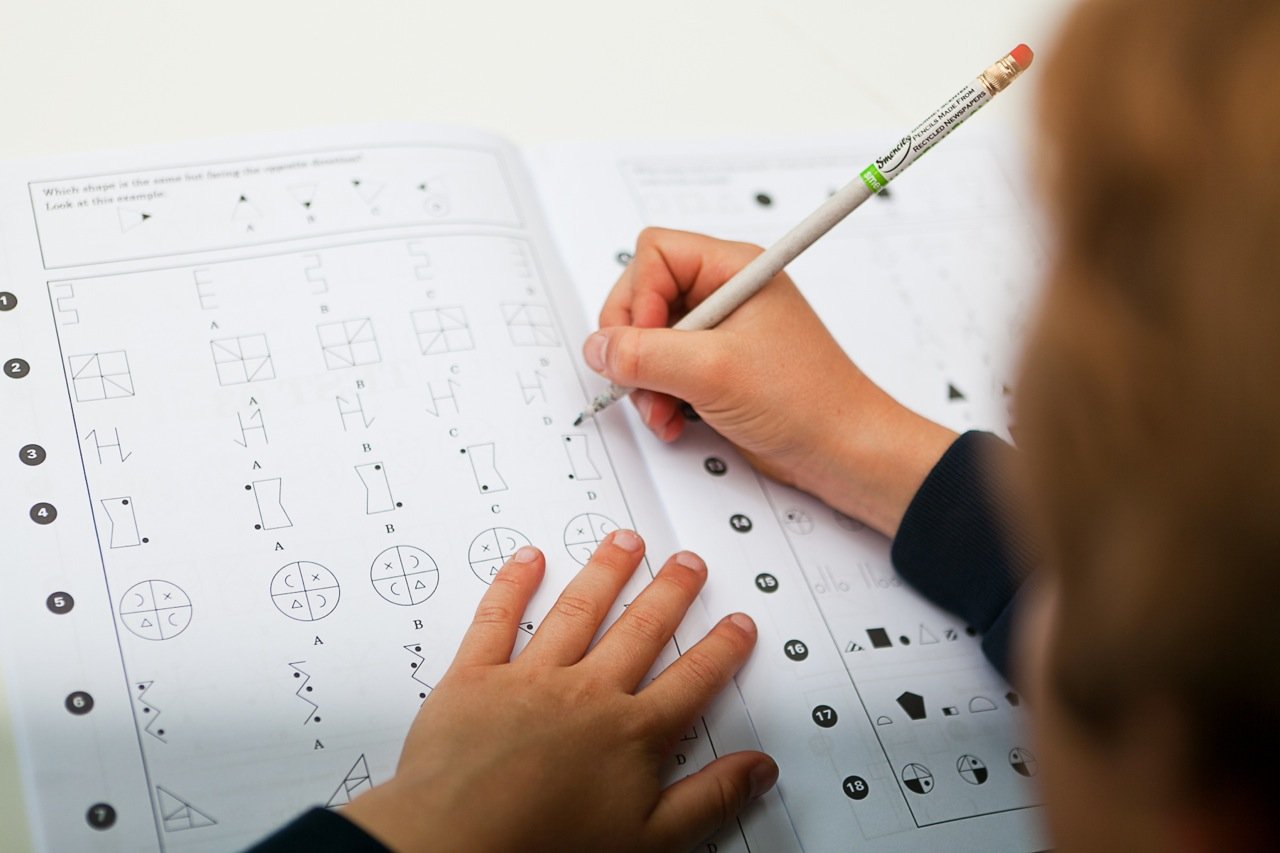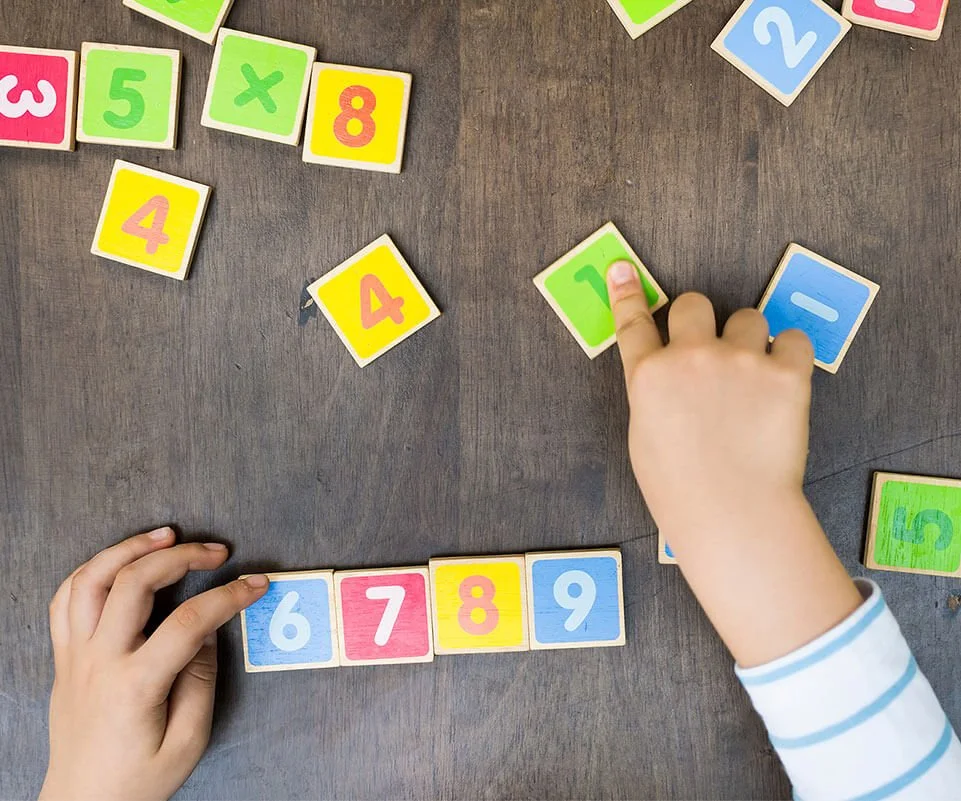How to re-arrange formulas for Maths GCSE - Advanced
VIDEO TRANSCRIPT
Hi,
I'm Hannah from Love Learning Tutors. Maybe you've seen part one and part two so now here is part three, expert, super advanced mode. Let's do it! If you find this a little bit too tricky, please go back to video one and video two where I discuss having x as a denominator.
So let's do this, we want to get all our x to be a subject in all these equations. As you can see, these two questions have more than one x in them so how do I make x a subject?
What does making x the subject mean? Basically we get it by itself at the front or the equation.
So, for step one here, as you can easily see, we have two Xs. Now if we add this to this side and have another X on this side and we've kind of got a situation where we have the Xs on the same side but they're tied in, they're multiplied by other things, so in this case, B is multiplied by a minus C. So the first step is we're going to take X out, we're gonna factorize. So taking X out of the equation so we end up with B minus C and if you just quickly do a reverse, that's just basically B times X and that's minus C times my X to make this. Now that we have this, this is much more organized. We like this, it's good. So this has a little times here, right? So as we discussed, they're times. So to do rearranging equations and to remove things and take them to the other side, some people call it, is we wanna do the opposite.
Hanna:
So as it's times right now, we want to divide both sides by B minus C. So divided by B minus C. And leave in the bracket because it makes life a little easier, more organized right now. These two will cancel out so then we have X is equal to D over B minus C. You can write the brackets here or not, it's absolutely fine as long as that D is above all of them. Okay, cool. So that's our first one done. So that wasn't too painful but I have a feeling the next one might be a little bit more complicated so let's have a look. We have our X here. Okay. Well, it's not too bad actually. It's not as ugly as it looks. So we can't really do anything about this square root right now but we can get rid of this four. So this relationship is four times by root of X. So in order to get rid of this four, this is a times by four, we need to do the opposite.
Hanna:
So we're dividing both sides by four. So what that gives us is, F over pie times by four but usually we write the number first so four pie is equal to the root of X. Okay, so we're pretty much almost there. So to get X back to its normal self, at the moment it's a root, we just want pure normal X. Normal X sounds really bad but yes. So what we're gonna do is we're gonna square both sides. So I'm just gonna do that, essentially. And what that does, we can actually leave all of this within the brackets right now, we don't need to organize it. It's absolutely valid to leave your answer like this and then we can just write X because root X times by root X, so by squaring it, it just makes X. So then we're done. We're done for this one. We're smashing it, we're going through it really, really quickly today. Okay.
Hanna:
So the last one, number three. So well, as I mentioned in the second video, we don't tend to like having, I don't know why people have emotions towards these things, but it's not so helpful to us having these Xs at the bottom. So what I would recommend first step to do is to move this all up to the top. And the way that we're gonna remove this divide of X minus P is we're gonna times both sides by X minus P. So that gives us X minus P times by X minus P. So these two in essence cancel out so we have Y times by X minus P. There goes my white board. Like that and X plus P. Okay. So here we go. So it's already looking a little bit better. Now we want to get all the X bits on the same side. What I would probably say at this stage is it would be best to multiply out this bracket because this X is kind of locked into this bracket. We can't access it until it's being released.
Hanna:
If we divide again, we're just gonna end up in exactly the same place and that's not really solving anything. So multiplying out these brackets, we get Y, X minus P equal to X plus P. Okay. So now we can start grouping out all the things that have X and bringing all those things to the same side. So let's bring it all over to this side, for example. This is a plus. So if there's no sign in front of something it's just a plus, you can just assume unless stated otherwise. You might see a minus here for example. So to bring this over to this side, we're gonna subtract X from both sides. So our next line becomes YX minus P minus X equals P. Now let's get rid of this P because it's the only thing from stopping the side being kind of only bits with X in it so this is a minus P. So to remove that we need to plus P to both sides. So then we have YX minus X equals, these two canceled out, P plus P makes two P. Excellent, okay.
Hanna:
So in a similar way to what we did here, what we factorized, we have two parts that had X in them but we wanted to get the X by itself. So in the same way here, we can take X out of the bracket and factorizing that so what makes Y, X? That's Y times by X. What makes minus X? It's X times minus one is equal to two P. Oh, I feel like this is a home run. This is the last bit. So there's a times here between this bracket and this X so to remove this Y minus X, what are we gonna do? It's times now so we're going to divide. So we're dividing both sides by, I'm just leaving it inside the bracket, just for neatness right now. So what we end up is X is equal to, these two cancel out, make one. We don't really worry about one so we'll just leave it like that and two P over Y minus one. Yeah. I think that pretty much is as tricky as your rearrangements will get.
Hanna:
I mean, this question involved quite a lot of different things. There was part of a rearrangement, there was some factorization going on there. This requires the knowledge about squaring numbers, roots and things and so as they do get more complicated you will notice that it's not just making it subject, that it does involve some knowledge of your other areas in math as well. So yeah, I hope that was helpful. I hope that it all made sense. If you have questions that you don't know how to solve, please comment below and I'll help you solve them or make a video to help you solve them and yeah please keep tuned. We'll have some more math tutorials soon. Please like, subscribe, share with your friends. Thank yo so much for watching. Bye.





























